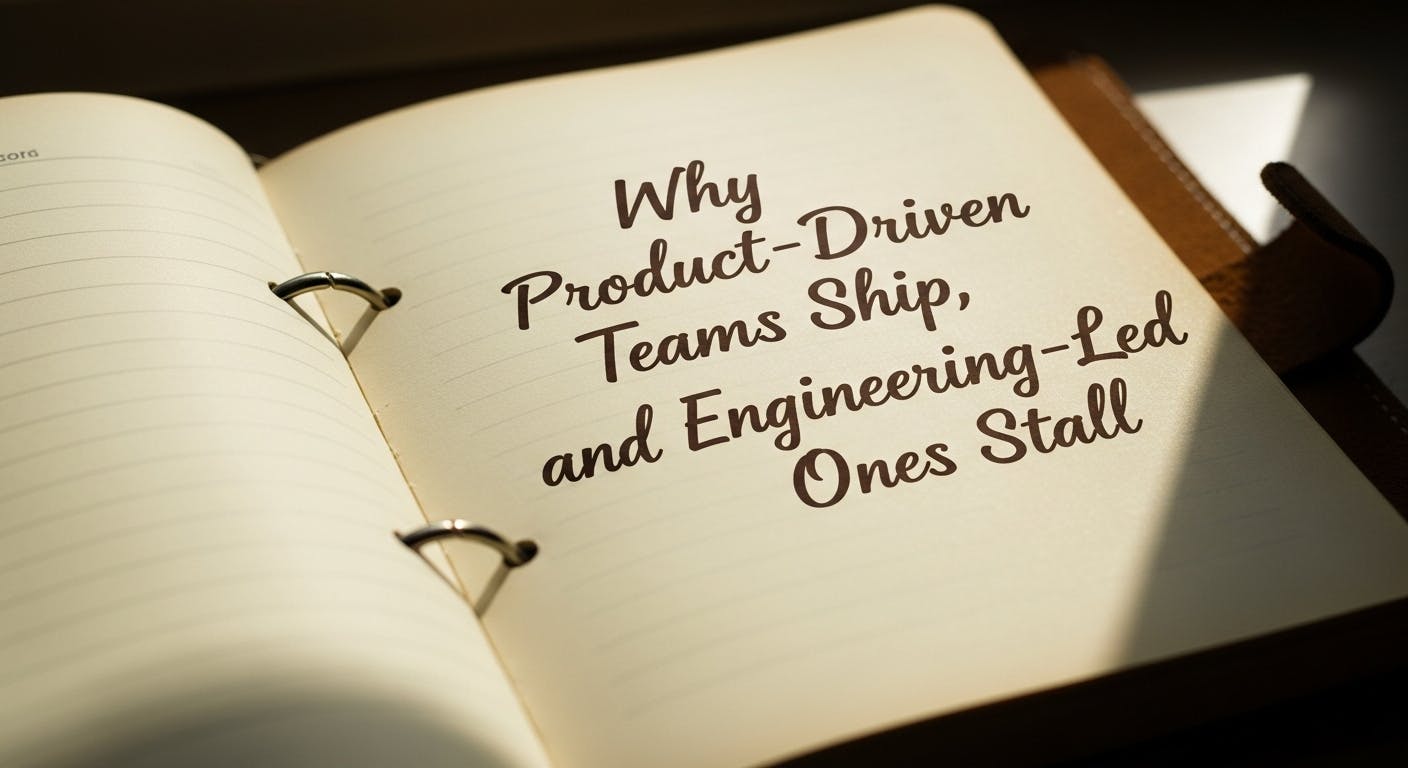In the past year, I have had countless conversations with product teams, founders, and engineering leads across different stages of startup and enterprise growth. A recurring theme I noticed was a struggle with the building approach. This led me to write about a dilemma I have helped many navigate: Should your team take a product-business-led approach or an engineering-led one?
This reflection solidified recently when I spoke with someone working at a mid-sized company. Over the last two years, they had built about seven products, none of which had been launched. The interesting thing about the company is that they have a solid legacy business, generating good cash flows. They wanted to automate, digitize, and innovate. However, the belief was that a deeply engineering-driven culture would solve this. The result was multiple internal tools, feature-heavy apps, and no real user value delivered. The business continued to run on its old rails, while the tech stack became a graveyard of unlaunched experiments.
Why I Advocate for a Product-Business-Led Approach
After working with various teams through Sprinble, advising startups, and reflecting on my own experiences, I’ve come to favor a product-led approach for several compelling reasons:
- Technology as an Enabler, Not the Driver: Technology is a powerful tool, but it should serve the business and its customers, not dictate the roadmap. A product-led approach ensures that technical decisions align with customer needs and business objectives, preventing the creation of solutions that are technically impressive but commercially irrelevant.
- Engineering Without a Business Case is a Pet Project: Even in heavily technical industries, engineering must be guided by a clear business purpose. Without this, projects risk becoming academic exercises. For example, at Sprinble, we consulted for a logistics company that spent 18 months building a complex supply chain optimization tool, only to discover that their customers needed a simpler interface for real-time tracking. A product-led focus would have prioritized this need from the start.
- Speed to Value Through MVPs: A product-led approach emphasizes building minimum viable products (MVPs) that deliver value quickly and allow for iterative improvements based on customer feedback. This contrasts with an engineering-led approach, which often prioritizes comprehensive systems over rapid deployment. A startup I guided/worked with launched a creator marketplace MVP in just 10 weeks, gaining early traction and refining features based on user data, while a competitor’s engineering-heavy platform took 12 months to launch in hindsight.
- Customer-Centric Development: By focusing on the product, teams can iterate based on real-world customer insights, ensuring solutions evolve with market demands.
What Should Determine Your Product Building Approach?
The right approach often depends on your context. A few guiding questions can help:
- Is your company in discovery mode or scaling mode?
- Do you have a clear product-market fit, or are you still searching?
- Are you solving a deeply technical problem (e.g., search algorithms, infrastructure optimization), or is your value derived from user experience and usability?
However, even if you’re building a deeply technical product, product leadership still matters. This is why I believe there are 4 factors I would ask that you consider:
- Market Dynamics and Competition: In fast-paced, competitive markets, like consumer tech or e-commerce, a product-led approach is often essential to validate ideas quickly and capture market share. For example, ride-sharing apps rely on rapid iteration to stay ahead. In contrast, industries like aerospace or semiconductors, where precision and reliability are critical, may require a stronger engineering focus to meet technical and regulatory standards.
- Customer Needs and Pain Points: Your approach should be guided by a deep understanding of your customers. A product-led strategy prioritizes solving real problems over building technically sophisticated systems.
- Resource Availability: Startups with limited budgets and teams benefit from a product-led approach, as it focuses resources on high-impact features. Larger organizations, like the company with 7 stalled products, may have the resources to invest in engineering-led projects but risk losing sight of customer value due to bureaucratic delays.
- Team Composition: A team dominated by engineers may naturally gravitate towards an engineering-led approach. Balancing this with strong product management ensures that technical efforts align with business goals.
How Can Your Team Switch to a Product-Led Approach?
Transitioning to a product-led approach requires intentional changes in mindset, processes, and culture. There are practical steps I believe can help when trying to make the shift:
- Empower Product Managers and Streamline Decision-Making: Ensure product leaders are not just backlog managers but strategic drivers. They should own the “why” and collaborate on the “how.”. Reduce bureaucratic bottlenecks by empowering product managers to make decisions without excessive approvals. The company with seven stalled products suffered from layers of red tape, which delayed launches. Simplifying decision-making processes can accelerate progress.
- Embrace the MVP Philosophy: Focus on building small, testable products that deliver value quickly. From the early feedback, you can build a much more valuable product.
- Foster Cross-Functional Collaboration: I personally believe in starting with smaller teams when building a product. Break down silos by creating teams that include product managers, designers, and engineers. This ensures that technical decisions are informed by customer and business priorities.
- Invest in Product Management: Hire or train product managers who can bridge customer needs and technical execution. They should excel at prioritizing features, managing backlogs, and communicating value propositions to stakeholders.
Are There Positives to Engineering-Led Building?
Yes. Engineering-led building isn’t inherently bad. In fact, based on my research, in some scenarios, it’s necessary:
-
Deep Tech and R&D: In domains like machine learning, blockchain, or hardware, innovation often starts with engineering breakthroughs before a clear productization path.
-
Platform Infrastructure: When you are laying the groundwork for future products (e.g., building core infrastructure or internal developer platforms), engineering may temporarily lead.
-
Rapid Prototyping: Some of the best engineering teams can build quick, testable prototypes that expose new opportunities.
-
Meeting Regulatory and Technical Standards: In regulated industries like healthcare or finance, an engineering-led approach ensures compliance with strict standards.
The challenge comes when engineering-led becomes the default rather than the deliberate choice. The key is to balance technical excellence with market relevance.
Conclusion
The debate between product-led and engineering-led building is not about choosing one over the other. It is about finding the right balance for your business. As someone who has been in both product and engineering shoes, I believe the best teams balance both worlds. But make no mistake: without product leadership, you risk building in the dark.
In most cases, a product-led approach, with its focus on customer needs, rapid iteration, and business value, delivers faster results and avoids the pitfalls of over-engineering. By prioritizing MVPs, fostering cross-functional collaboration, and streamlining processes, teams can build solutions that resonate with customers and drive growth.
For organizations stuck in engineering-led cycles, the transition to a product-led approach is achievable with clear goals and a commitment to customer-centricity. Ultimately, technology should empower the product, not overshadow it.










